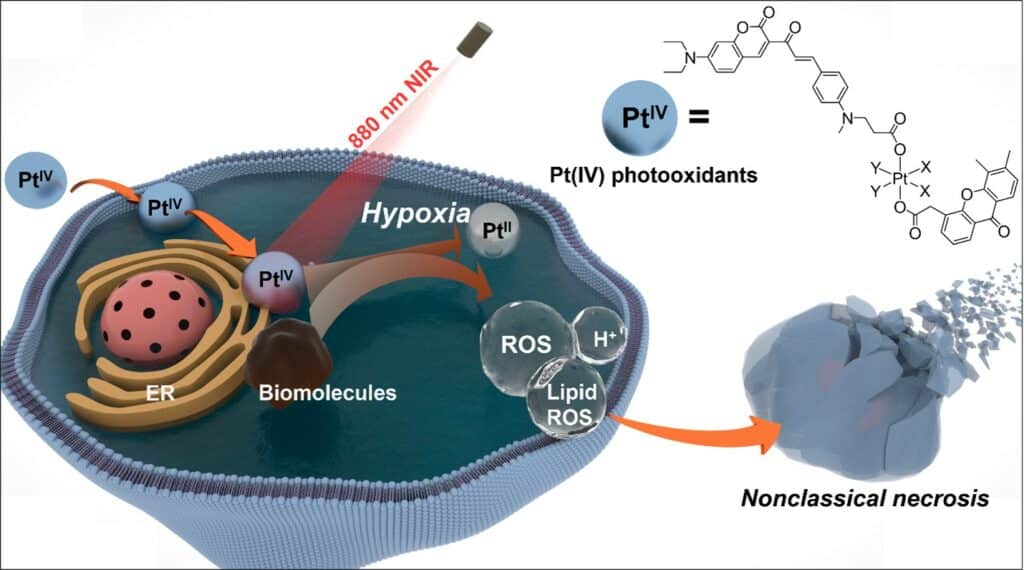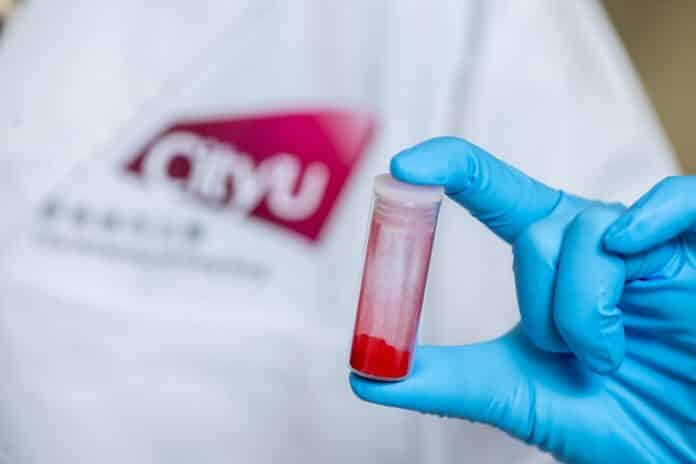City University’s (CityU) researchers have made a groundbreaking advancement in cancer treatment. They have developed a novel therapy called “photo-oxidation therapy,” which has the potential to revolutionize anticancer treatments. This therapy utilizes near-infrared light to activate platinum(IV) complexes, enabling the targeted destruction of biomolecules involved in cancer.
Researchers at City University of Hong Kong have made a significant breakthrough by creating a new type of treatment that can kill cancer cells effectively, even when there’s very little oxygen around. They’ve developed particular substances that can be activated by near-infrared light, and these substances cause a unique kind of cell death in cancer cells that can overcome their resistance to treatment. This discovery is called ‘photo-oxidation therapy’ and could lead to new and promising cancer drugs.
Traditional cancer treatments, like photodynamic therapy, use substances that produce reactive oxygen molecules when exposed to light, and these molecules kill cancer cells. But most of these treatments need oxygen to work well. The problem is that many solid cancer tumors don’t have much oxygen, so these treatments don’t work as effectively. The new therapy developed by CityU researchers doesn’t rely on oxygen, making it a potentially powerful tool against cancer.
Researchers at City University of Hong Kong, led by Professor Zhu Guangyu and Professor He Mingliang, have found a way to improve cancer treatment. They combined metals like platinum with light-sensitive substances to create a powerful medicine. When they gave this treatment to mice with tumors and then shone near-infrared light on them, it significantly reduced the size of the tumors. This means they can effectively treat cancer without needing much oxygen, which is a big step forward in cancer research.
Professor Zhu said, “Intriguingly, we found that the ‘death mode’ of cancer cells induced by the Pt(IV) photo-oxidants differs from that of other anticancer agents. A unique mode of cancer cell destruction was initiated through the dual-action effect of strong intracellular oxidative stress and reduced intracellular pH value.”
Researchers at City University of Hong Kong made a significant discovery in cancer treatment. They found that when they used a special treatment called Pt(IV) photo-oxidants and shone near-infrared light on it inside cancer cells, it made the cells produce molecules that could kill the cancer. Importantly, it didn’t need oxygen to work. These molecules caused cell death and made the environment inside the cancer cells less friendly for them.

The researchers also found that this treatment helped the immune system. It made immune cells more active and increased the number of critical immune cells that fight cancer. This new treatment could be a game-changer in fighting cancer.
Researchers at City University of Hong Kong have found a way to treat cancer that overcomes its resistance to traditional treatments. They used particular substances called Pt(IV) photooxidants that, when activated by light, not only kill cancer cells but also boost the immune system. This is a promising direction for developing new cancer drugs. The researchers plan to do more studies to ensure these unique substances are safe and effective for clinical trials.
In conclusion, CityU’s development of photo-oxidation therapy represents a remarkable advancement in anticancer treatment. By leveraging near-infrared light to target and destroy biomolecules within cancer cells selectively, this novel therapy has the potential to transform the landscape of cancer care, offering new hope in the fight against this devastating disease.
Journal Reference:
- Deng, Z., Li, H., Chen, S. et al. Near-infrared-activated anticancer platinum(IV) complexes directly photooxidize biomolecules in an oxygen-independent manner. Nature Chemistry. DOI: 10.1038/s41557-023-01242-w.
